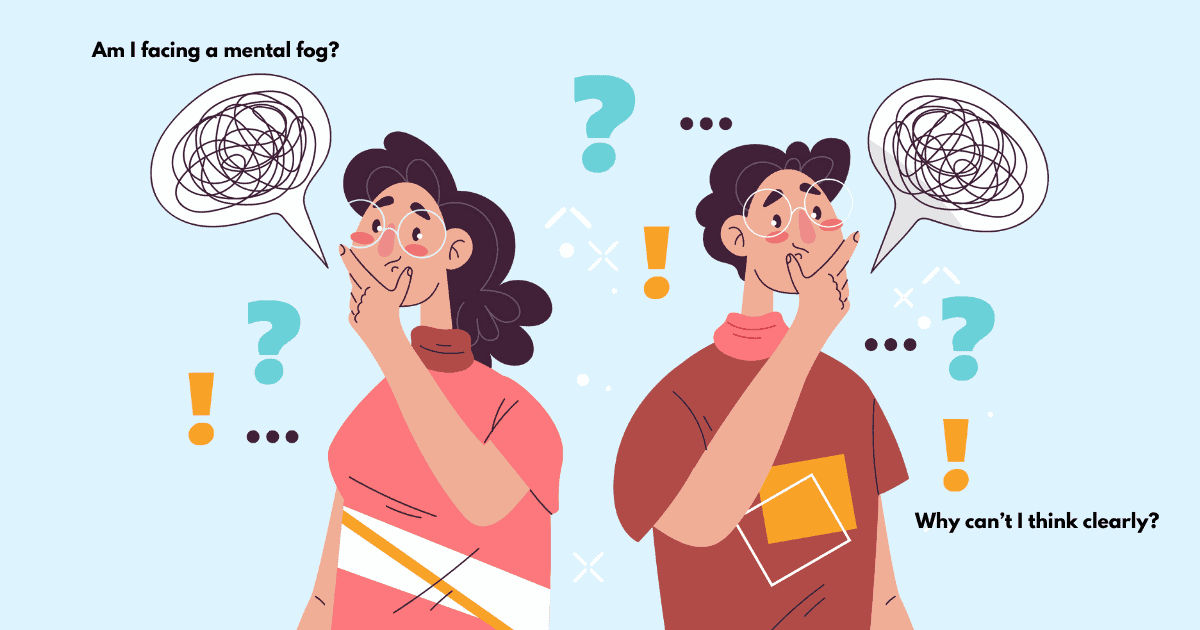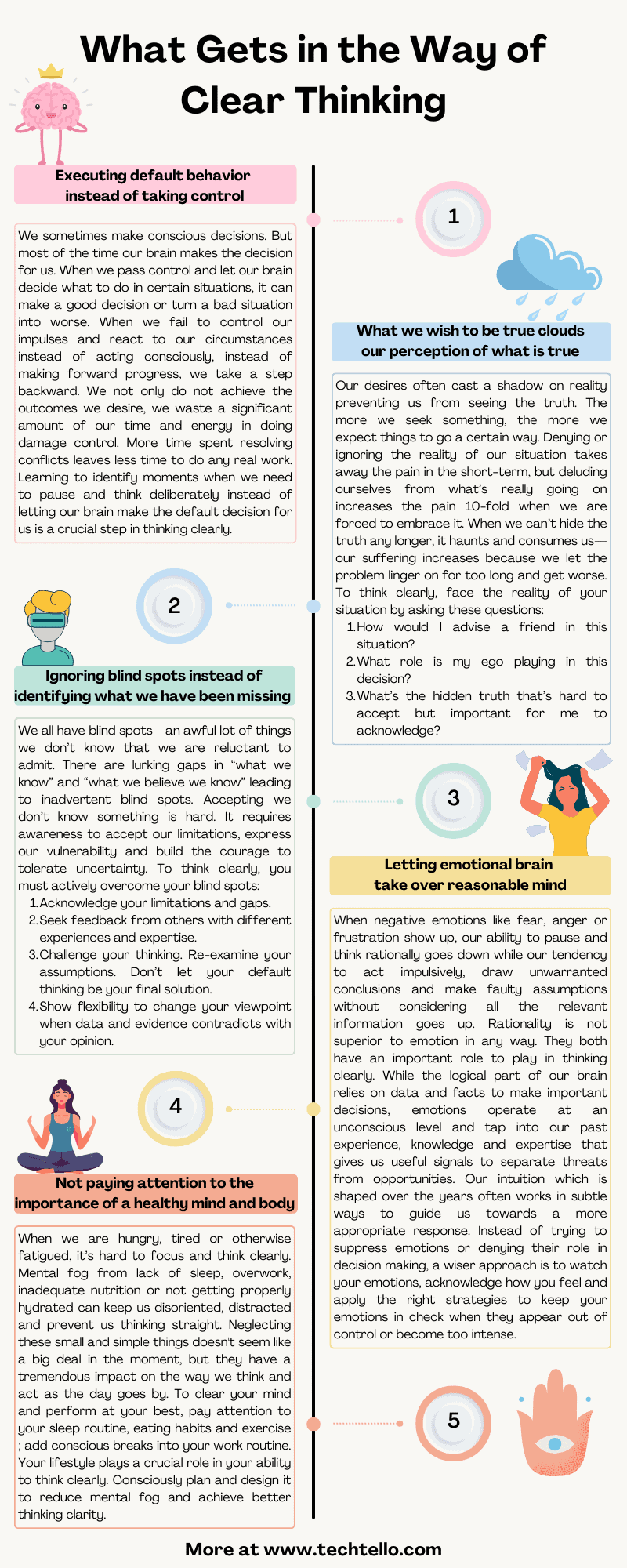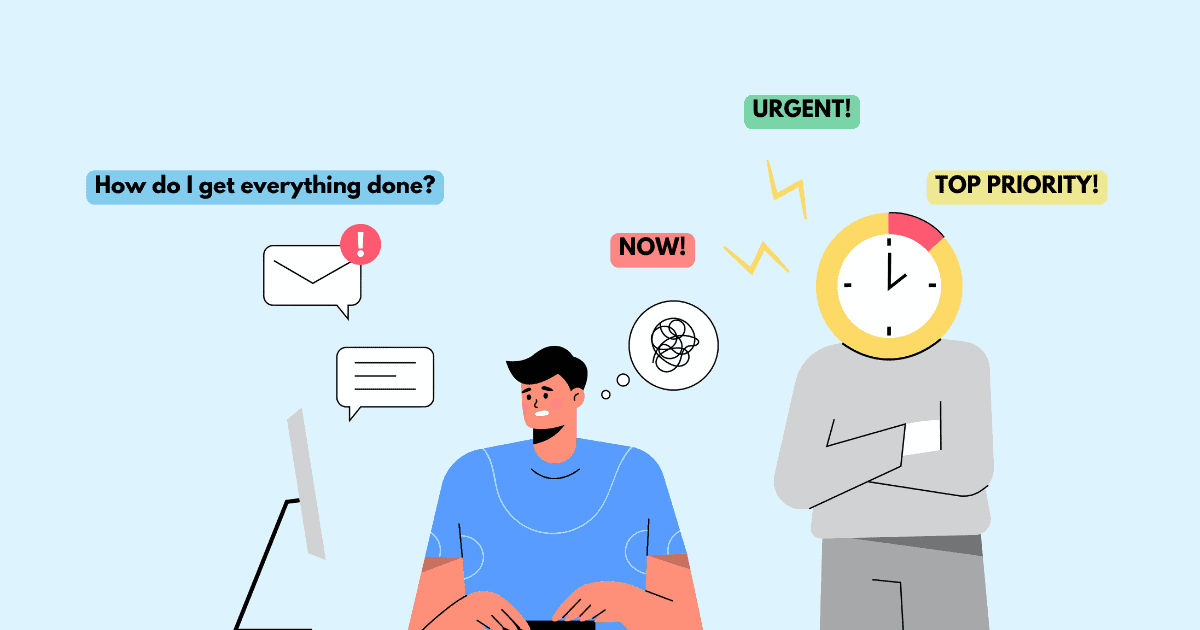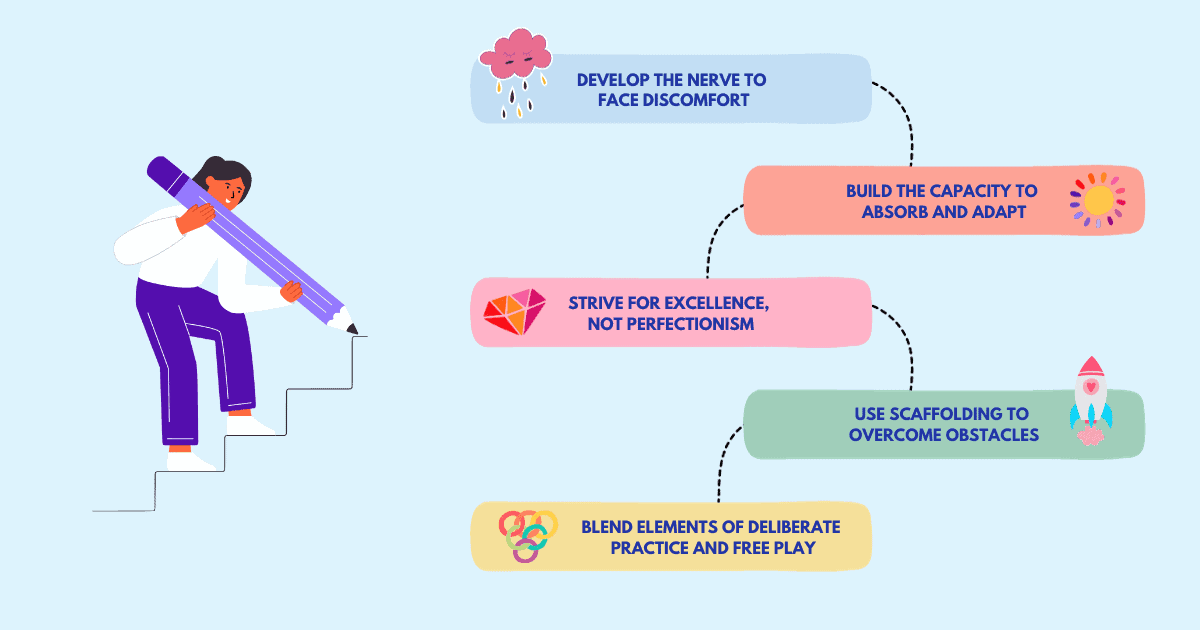What Gets in the Way of Clear Thinking?

Our thoughts aren’t clear most of the time. Instead of a clear blue sky, they often appear as dark clouds and storms in the sky.
While some people are able to look beyond this temporary darkness into the hidden bright blue sky, others get bogged down by it and feel trapped, unable to think and act clearly.
Clear thinking is a point of leverage—it helps you make better decisions and avoid deadly mistakes with far-reaching consequences. Many forces—some within our control and others outside it—delude our thinking and judgment. Learning to recognize these forces and playing them to our advantage instead of letting them deceive us is a valuable skill to build in life.
Like a diamond, the more clarity we have, the more value we bring.
— Ruth Saw, Clarity is Power
But thinking clearly isn’t something you can achieve in a day. Building mastery in it is an iterative process because the things that get in the way of clear thinking never really go away. You only get better at catching errors in your thinking and applying the right strategies to remove brain fog that gets in the way of clear thinking.
Here are the 5 factors that have the ability to overpower and completely color your thinking.
Executing default behavior instead of taking control
We sometimes make conscious decisions. But most of the time our brain makes the decision for us.
When we pass control and let our brain decide what to do in certain situations, it can make a good decision or turn a bad situation into worse.
We may overreact when someone disagrees with us.
We may get angry and lash out at someone.
We may judge and stamp others.
When we fail to control our impulses and react to our circumstances instead of acting consciously, instead of making forward progress, we take a step backward.
We not only do not achieve the outcomes we desire, we waste a significant amount of our time and energy in doing damage control. More time spent resolving conflicts leaves less time to do any real work.
Our conscious mind tries hard to preserve the illusion that it deliberately chose every action you have ever taken; in reality, in many of these decisions it was a bystander at best, and much of the time it did not even notice the decision being made.
— Rory Sutherland, Alchemy
Learning to identify moments when we need to pause and think deliberately instead of letting our brain make the default decision for us is a crucial step in thinking clearly.
What we wish to be true clouds our perception of what is true
We all have preconceived notions about the way certain things should be. Our thinking is further clouded by our beliefs and expectations.
We may expect to excel in our jobs.
We may believe that we have a happy relationship.
We may think we are healthy.
Our desires often cast a shadow on reality preventing us from seeing the truth. The more we seek something, the more we expect things to go a certain way.
Denying or ignoring the reality of our situation takes away the pain in the short-term, but deluding ourselves from what’s really going on increases the pain 10-fold when we are forced to embrace it. When we can’t hide the truth any longer, it haunts and consumes us—our suffering increases because we let the problem linger on for too long and get worse.
The hard thing is seeing the truth. To see the truth, you have to get your ego out of the way because your ego doesn’t want to face the truth. The smaller you can make your ego, the less conditioned you can make your reactions, the less desires you can have about the outcome you want, the easier it will be to see the reality.
— Eric Jorgenson, The Almanack of Naval Ravikant
To think clearly, face the reality of your situation by asking these questions:
- How would I advise a friend in this situation? It’s easy to give good and honest guidance to a friend who’s struggling or dealing with a difficult situation. Thinking about a friend makes you more likely to apply the same advice to your situation.
- What role is my ego playing in this decision? Am I thinking rationally or letting my ego decide what I see?
- What’s the hidden truth that’s hard to accept but important for me to acknowledge?
- How can I make a meaningful change in my life to make progress towards my goals?
Instead of being busy all the time, create space and set time for reflection. Consciously paying attention to your thinking without the distractions and demands of daily life, can help you think and see clearly.
Ignoring blind spots instead of identifying what we have been missing
We all have blind spots—an awful lot of things we don’t know that we are reluctant to admit. We put on a show, pretend we have all the answers and make a suboptimal decision based on our limited view of the world without recognizing our highly flawed and biased thinking.
There are lurking gaps in “what we know” and “what we believe we know” leading to inadvertent blind spots. This is further exacerbated by our past beliefs, experiences, upbringing and many other psychological factors.
Accepting we don’t know something is hard. It requires awareness to accept our limitations, express our vulnerability and build the courage to tolerate uncertainty.
There is a gap in our thinking that comes from believing that the way we see the world is the way the world really works. It’s only when we change our perspective—when we look at the situation through the eyes of other people—that we realize what we’re missing. We begin to appreciate our own blind spots and see what we’ve been missing.
— Shane Parrish, Clear Thinking
To think clearly, you must actively overcome your blind spots:
- Acknowledge your limitations and gaps. Recognizing and acknowledging your blind spots is the first step to counteract its effects.
- Seek feedback from others with different experiences and expertise.
- Challenge your thinking. Re-examine your assumptions. Don’t let your default thinking be your final solution.
- Show flexibility to change your viewpoint when data and evidence contradicts with your opinion or points in a different direction.
Not knowing something does not make you weak or stupid. When you express vulnerability, others don’t think you’re out of control or that you don’t know what you’re doing. Rather, you come across as a highly self-aware person with great leadership abilities.
Cognitive Distortions Bundle
Challenge and replace irrational thoughts with more realistic and adaptive thoughts.
Letting emotional brain take over reasonable mind
Our emotions can sometimes get the better of us. We may be so emotionally charged or feel overwhelmed by our situation that we may find it hard to separate what is real and true from our made up stories.
When negative emotions like fear, anger or frustration show up, our ability to pause and think rationally goes down while our tendency to act impulsively, draw unwarranted conclusions and make faulty assumptions without considering all the relevant information goes up.
Emotions form in the brain, just as crystal-clear, rational thoughts do. They are merely a different form of information processing – more primordial, but not necessarily an inferior variant. In fact, sometimes they provide the wiser counsel.
— Rolf Dobelli, The Art of Thinking Clearly
Rationality is not superior to emotion in any way. They both have an important role to play in thinking clearly. While the logical part of our brain relies on data and facts to make important decisions, emotions operate at an unconscious level and tap into our past experience, knowledge and expertise that gives us useful signals to separate threats from opportunities. Our intuition which is shaped over the years often works in subtle ways to guide us towards a more appropriate response.
Instead of trying to suppress emotions or denying their role in decision making, a wiser approach is to watch your emotions, acknowledge how you feel and apply the right strategies to keep your emotions in check when they appear out of control or become too intense.
Follow these 3 steps to regulate your emotions in more positive ways:
Step 1: Accept your emotions
Instead of stifling or pushing them away, learn to accept your emotions. Accepting does not make them true. It just allows your emotions to be what they are without judging them or trying to change them. Seeing the emotion for what it is without attempting to get rid of it shifts you from emotional avoidance towards emotional acceptance.
Step 2: Name it to tame it
Next, name the emotion to tame the emotion. In other words, say to yourself, out loud, what negative emotion you’re experiencing, as you’re experiencing it. For example: when a negative emotion like fear comes along, say “I’m experiencing fear.” Simply naming it is going to calm you down. This technique introduced by psychologist Dan Siegel creates a bit of space between you and that emotion. Naming your emotions tends to diffuse their charge and lessen the burden they create.
Step 3: Reappraise your thoughts
Reappraisal involves reframing your thoughts in a way that is empowering and moves you towards your goals. It requires putting a different spin on your thoughts by looking at them from another perspective, one that involves a more helpful lens. For example, instead of telling yourself “I’m such a fool for making this mistake,” say “Everyone makes mistakes from time to time. What can I learn from this experience to do better next time?”
Balancing emotions with reasoning is the path to clear thinking without tilting heavily in either direction.
Not paying attention to the importance of a healthy mind and body
When we are hungry, tired or otherwise fatigued, it’s hard to focus and think clearly. Mental fog from lack of sleep, overwork, inadequate nutrition or not getting properly hydrated can keep us disoriented, distracted and prevent us thinking straight.
Neglecting these small and simple things doesn’t seem like a big deal in the moment, but they have a tremendous impact on the way we think and act as the day goes by.
Mental fog can cause us to:
- Become reckless. We may rush through and act impulsively instead of taking the time to think through the consequences of our decisions.
- Choose the status quo. We may choose to stay inside our comfort zone and resist the idea of a change since it’s uncomfortable and demands a lot of effort and energy.
- Get stuck with analysis paralysis: When our mental machinery is tired or not working at its best, it’s hard to separate signal from noise. This may lead to overthinking—tendency to think too much and move back and forth on ideas without the ability to give them a specific direction.
- React aggressively: When our brain’s regulatory power is weakened, it’s easy to lose control over our emotions. Everything around us can feel more intense than normal. Small mistakes can make us furious, disagreements may cause irritation and we may react aggressively to things that are not in line with our expectations.
The best asset we have for making a contribution to the world is ourselves. If we underinvest in ourselves, and by that I mean our minds, our bodies, and our spirits, we damage the very tool we need to make our highest contribution. One of the most common ways people – especially ambitious, successful people – damage this asset is through a lack of sleep.
— Greg McKeown, Essentialism
To clear your mind and perform at your best:
- Pay attention to your sleep routine, eating habits and exercise. A good exercise can energize your body and give your mind the much needed break to improve mental clarity.
- Remove clutter from your environment. Cluttered space makes it hard to focus and concentrate.
- Add conscious breaks into your work routine. Pomodoro technique is a great way to achieve this. It allows you to consciously plan these breaks to do something that staves off mental fatigue. You can use the break to make a cup of coffee, stretch, exercise, call your mom, fold laundry or do whatever you feel like doing in a short break.
- If you’re bothered by a continuous stream of thoughts that doesn’t seem to stop, something might be worrying you or causing you anxiety. Just write down whatever thoughts you’re having without worrying about how they sound or whether they’re true. This little exercise may seem futile at first, but doing it regularly will help clear your mind.
Your lifestyle plays a crucial role in your ability to think clearly. Consciously plan and design it to reduce mental fog and achieve better thinking clarity.
Pomodoro Planner Bundle
Break down your big goals into small tasks, limit distractions and build focus with this planner.
Summary
- We all struggle with thinking clearly. We aren’t born with it, nor are we taught to avoid biases and other mental errors that get in the way of clear thinking. The only way to become a clear thinker is to make a conscious effort towards it.
- Thinking clearly can supercharge your career by enabling better decisions and preventing costly mistakes.
- Our brain is a powerful machine, but at times the same power can get in the way of clear thinking. Letting our brain make decisions without our conscious awareness can often lead to bad choices and poor decisions. Separating decisions that require deliberate thinking from those that can be made on autopilot is a crucial step in thinking clearly.
- Our desires create a version of truth that’s far from reality. We refuse to see what’s true because coming to terms with reality requires courage to accept our failures, disappointments and even gaps in our abilities. To think clearly, put ego aside and acknowledge the gap between where you’re and where you need to be.
- Pretending to be an expert in areas where our knowledge or experience is limited can prevent us from seeking information to make more thoughtful and informed decisions. We all have blind spots and recognizing these gaps in our thinking can enable us to seek alternative viewpoints and diverse opinions.
- Better thinking doesn’t come with pushing emotions aside and only looking at data and facts. Our emotions give us subtle signals that are an important factor in thinking clearly. By combining “what we think” with “how we feel,” we can increase the odds of a successful outcome.
- A cluttered mind or an exhausted body is in no condition to cooperate. If you’re trying hard to think, but keep feeling foggy, the problem isn’t your skills or abilities. Pushing yourself in these moments is a foolish mistake. Listen to your mind and body and give it what it needs to revive and rejuvenate—go for a walk, get a snack, drink coffee or talk to someone who takes your mind off work, even if for a brief moment.






























